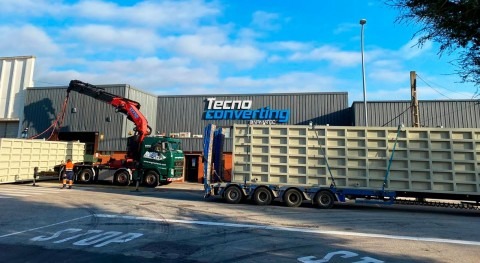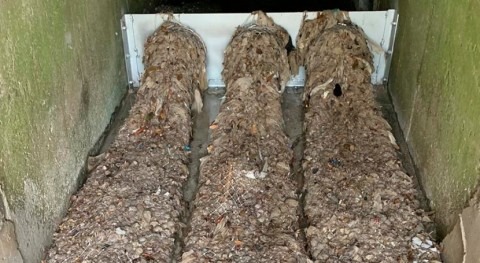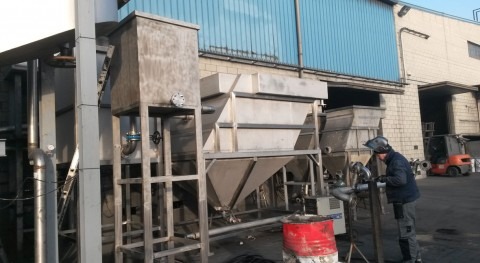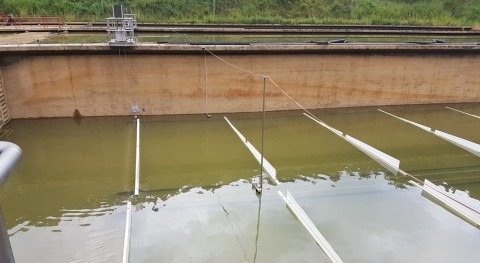Even though Latin America has about 31% of the drinking water resources in the world, they are unevenly distributed across the region. Proof of that is the proportion of the population with access to drinking water in Latin America and the Caribbean: 94% , one of the highest in developing regions. However, the percentage of people with access varies widely between countries and between rural and urban areas within the same country, with more than 50 million people with no access to water. A lack of political will and the fact that water issues are not considered a problem affecting other sectors are the main barriers. Thus, water access becomes a limiting factor that leads to an economic gap between Latin American countries.
According to UN data, the global water demand will increase by 50% in 2050, and in turn, water insecurity at the global level will lead to economic impacts at the local level. The geographic location and characteristics of a country determine the availability of water resources, but that is not the only determining factor: climate change is the big enemy globally, and it affects Latin America significantly. This phenomenon is not only changing the precipitation patterns or increasing temperatures; some regions are experiencing more frequent and severe extreme weather events, leading to devastating floods and droughts.
These two sides of the coin with regards to water resources are gradually more common in Latin America, and lead to big differences in water resource availability in a short period of time. In countries like Chile, one of the most affected by climate change in the region, water infrastructure are deteriorating and collapsing, with a serious effect on the water supply.
Due to climate change, in countries like Chile, water infrastructure are deteriorating and collapsing, with a serious effect on the water supply
Water management in Chile
Water legislation in Chile has evolved through time to address different realities and issues. In 1855 a Civil Code was enacted, introducing one of the first regulations dealing with water in the country (it established the difference between public and private waters). Subsequently, in 1949 a Water Code was drafted, with a definite version that entered into force in 1951, combining in a single piece of legislation all matters related to Chilean waters.
After several reforms, the 1981 Water Code was the most important milestone for water management in Chile, since it established that water resource management and administration would be handed to holders of water use rights, water users and particularly their organisations (Article 186 and subsequent ones in the Water Code); it introduced the market as the main instrument to allocate water resources and established the free transfer of water rights.

With this law as a reference (a reform was passed in 2005 and a new reform was approved in 2017), the water sector in Chile is subject to a water market system. In this model, the government, through the Directorate General for Water, grants a water use right for a certain amount of water to individuals that request it to carry out economic activities. This concession is unlimited, free of charge, and permanent: the individual only has to indicate the type of water use (consumptive or non-consumptive use), the amount of water required and the intended use.
Due to the importance of water resources, in Chile there are more than 40 entities, public and private, involved in this sector. Government actors include the National Environment Commission (CONAMA), the Ministry of Public Works (MOP) through the Directorate General for Water (DGA), the Directorate for Water Infrastructure (DOH) and the Water Services Regulatory Authority (Superintendencia de Servicios Sanitarios, SISS), the Ministry of Environment (MMA) essentially through the National Irrigation Commission (CNR), and municipalities. In the private sphere, there are Water User Organisations (OUA), formed when there are two or more holders of water use rights for the same water flow.
The large number of actors with competences over water management is, indeed, one of the main problems for the sector, because it obstructs processes and leads to serious inefficiencies. But it is not the only problem: water resource management in Chile is also a subject of debate because it is the most privatised water and sanitation system in Latin America and, it is also increasingly affected by drought, with water supply problems in several communities.
The large number of actors with competences over water management is, indeed, one of the main problems for the sector, because it obstructs processes and leads to serious inefficiencies
According to the 2016 Sanitation Services Management Report prepared by the SISS (Water Services Regulatory Authority), the urban sanitation sector comprises 60 companies; 54 of them are in operation, serving areas with an exclusive concession in the 15 regions of the country, and providing services to more than 5 million households in 397 locations. This means that private operators provide services to 96.5% of the users, whereas State concessions, municipalities and cooperatives provide services to the remaining 3.95% of users. As of December 2016, the coverage of drinking water services in urban areas and areas with concessions was 99.92% at the national level, and the coverage of sewerage services was 96.83%; with regards to the treatment of waste water collected through sewerage systems, the coverage was 99.93%.
If we talk about infrastructure, drinking water services are provided through 306 treatment systems across the country. Out of that total, 48% require drinking water treatment plants, with 238 of them in the country, according to data from the mentioned report. With regards to the regional distribution of waste water treatment systems, most of them are located in the Biobío Region, with 49 units — 17% of the total number of waste water treatment plants — followed by the Araucanía Region, with 34 plants (12% of the total) and the Metropolitan Region with 32 plants (11% of the total).
Valparaíso, the region most affected by climate change
Valparaíso is not only the second most populated metropolitan area in Chile, but also the region where water resource management is experiencing more than any other Andean region the effects of climate change.
In the past few years, Chile has experienced a gradual increase in water scarcity, mainly caused by the limited precipitation registered in these years. Valparaíso is one of the regions where the water scarcity problem is more severe, but it is not an isolated problem. According to the forecasts, Valparaíso is the region most vulnerable to the effects of climate change. The report 'Preparation of a district climate database for Chile: baseline (1980-2010) and forecast for 2050' [Elaboración de una base digital del clima comunal de Chile: línea base (1980–2010) y proyección al año 2050], by the Ministry of Environment and drafted by the University of Chile, states that in 2050, all districts in the region will experience temperature increases, with an average increase of 1.9 degrees Celsius in the summer and 1.6 degrees Celsius in the winter months. In addition, the report estimated that the average annual precipitation will decrease by 17%, leading to reduced river flows — between 20% and 40% — especially in the Aconcagua river. As a consequence, soil erosion processes will increase.

Its location and relief, seeming a large natural amphitheatre at the bay of Valparaíso and surrounded by hills, makes it particularly vulnerable to climate change. Researchers from the University of Playa Ancha confirm this, stating that 'the Region of Valparaíso is, within Chile, the most vulnerable one to climate change'. This has resulted in 'increased temperatures, sea level rise, ocean temperature rise, floods in the coastal area, but most importantly, droughts, forest fires, landslides and wave surges'. Indeed, Valparaíso has changed from being a wet, Mediterranean region, to a semi-arid area. The longest drought on record in the past 100 years hit the Region of Valparaíso between 2008 and 2015, and still causes water scarcity in the area.
According to the forecasts, Valparíso is the region most vulnerable to the effects of climate change
The 'Council for Water Resource Development and Sustainability in the Region of Valparaíso' [Consejo para el Desarrollo y Sostenibilidad Hídrica de la Región de Valparaíso], created in 2015 to work on a public policy proposal and an action plan to ensure water security, issued a report [Lineamientos estratégicos de política pública e iniciativas para el desarrollo y sostenibilidad hídrica de la región de Valparaíso] providing guidelines for public policy and initiatives for water resource development and sustainability in the region of Valparaíso. The report reiterates that water supply security is a strategic priority for the future of the region, and that ensuring water availability for human consumption and sanitation is the first priority.
An efficient, long term solution
Esval S.A. is the company in charge of drinking water and waste water treatment services in the region of Valparaíso. It has accepted the challenge of transforming current water resource management threats into opportunities for human, economic and social development, and for environmental protection, focusing on the potential of the region.
It provides drinking water services to 541,800 users — 99.3% of the population in the Region of Valparaíso — and sewerage services to 489,914 users, making it the company with most customers in the segment of medium-sized water service providers. According to its 2016 sustainability report, Esval has 4,660 kilometres of sewerage network, 39 drinking water systems and 32 waste water treatment plants. This infrastructure was used to treat 136 million m3 of waste water and abstract 175 million m3 of water.
TecnoConverting Engineering presented the most reliable solution to improve the performance of the las Rojas drinking water treatment plant, using lamellar technology.
Aware of the negative impacts of climate change in the region and the critical and structural situation in the company's concession area, in 2018 ESVAL focused on improving water quality. Therefore, it invested in projects to increase operational efficiency, while ensuring a responsible management and use of the resource.
Out of all the projects in place, we should note the significance and impact of the project at the Las Rojas drinking water treatment plant, one of the most important ones in the region. The company issued a public tender to upgrade the four lamellar clarifiers in two tanks measuring 9 metres by 2.4 metres made up of asbestos-cement, replacing them with equivalent lamella clarifiers made up of a different material, thereby increasing the flow in the plant and its efficiency. Of all the bidding companies, TecnoConverting Engineering presented the most reliable solution: its lamellar technology with the TecnoTec H40 hexagonal lamella. Their bid obtained a technical score of 97 out of 100 and a final classification of 99 out of 100, and the project got under way in July 2018. 'We were very pleased to obtain the best technical score, as it confirms that the engineering technology of TecnoConverting is among the best in the world with regards to lamella clarifiers', stated David Barquet, General Manager of TecnoConverting, after learning about the award.

The proposal of TecnoConverting Engineering consisted of, in a first phase, replacing the old asbestos-cement lamella by TecnoTec H40 lamella, to increase the current treatment capacity of the plant and this way absorb potential peaks in flow (lamellar resilience) during occasional severe storms, which are increasingly more frequent due to the impact of climate change in the region. The TecnoTec lamellar modules of TecnoConverting Engineering are specially designed to provide maximum efficiency in the settling process, increasing the specific contact area for faster separation of suspended particles, thus accelerating sedimentation. Specifically, the advantages of the TecnoTec H40 lamella are: increased capacity to separate suspended solids, larger surface area per m2, lower construction costs, assembling technology, self-supporting structure and finally, they are certified for food production. Once the asbestos-cement lamella are removed, the supporting structure is replaced by the new fiberglass-reinforced polyester pultrusion profile model by TecnoConverting. Finally, the lamella are installed with an anti-flotation system to prevent them from rising in the future due to water forces. The entire system follows the EASY-INSTALL process designed by TecnoConverting, which allows completing the work in record time, without specialised technicians; the work is done by project staff.

Specialised in settling processes and lamella, engineering, customised design, construction and assembly of the best technical solution for their clients, TecnoConverting Engineering is the only Spanish company specialised in lamella clarifiers, so the award of the project at the Las Rojas drinking water treatment plants is an honour for the company: 'Winning a contract with one of the most important companies in the country such as ESVAL, is a great pleasure for us. Having the trust of the most important Latin American companies as their technology partner is a great honour for all of us at TecnoConverting Engineering'.

TecnoConverting Engineering started its business activity in 2005, specialising in building equipment for the water treatment sector, including waste water treatment plants, drinking water treatment plants, and desalination plants. The company specialised in settling processes and lamellar modules, improving the manufacturing process and the calculation methodology for lamellar clarifiers. It then decided to create its own R&D department. Its R&D activities have allowed the company to further its growth and adapt the best solutions to the needs of each client. Now, with more than 12 years in business, TecnoConverting Engineering has positioned itself as one of the best known technology companies in the water sector worldwide, providing assistance to engineering firms, construction firms and public entities across the world. In Latin America, it has been involved in projects in Dominican republic, Mexico, Venezuela and Nicaragua.













